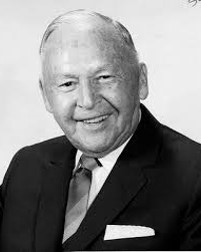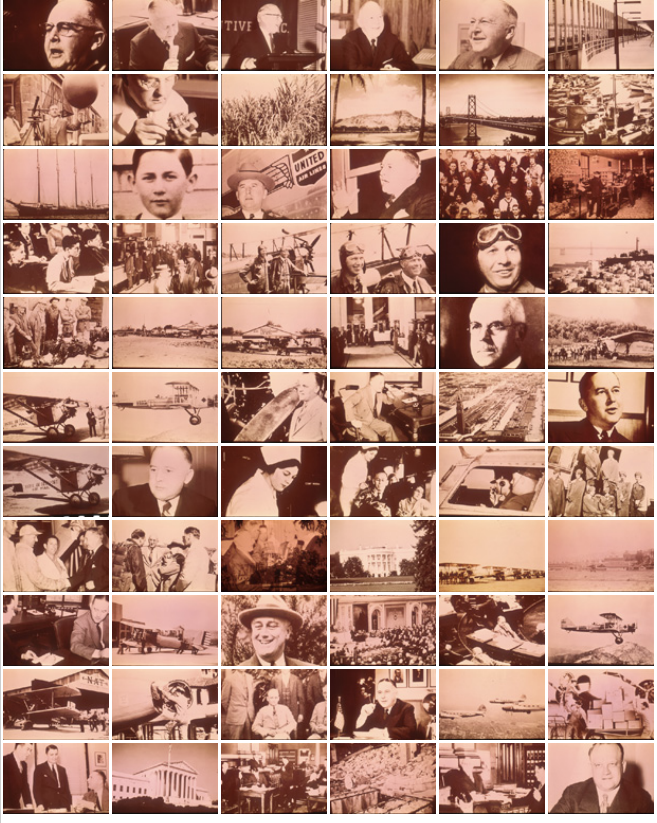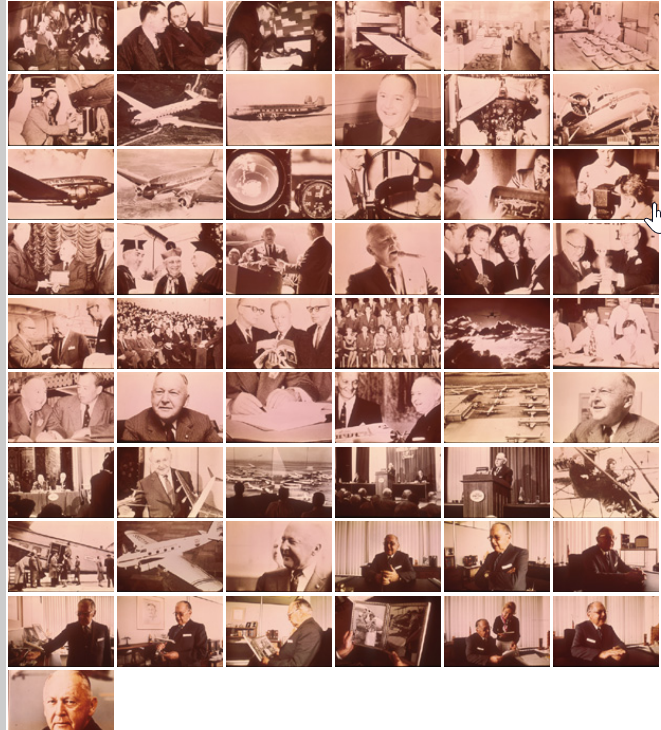W. A. “Pat” Patterson -- United Air Lines

Click for PDF version of W. A. “Pat” Patterson -- United Air Lines -- Biography
Introduction
 Picture of W. A. “Pat” Patterson -- United Air Lines
Picture of W. A. “Pat” Patterson -- United Air Lines
W. A. “Pat” Patterson Wikipedia Page
(Following is a transcript from Pat Patterson's induction into the American National Business Hall of Fame, prepared by United Air Lines.)
William Allan "Pat" Patterson was a man of courage and conviction. He had great faith in the free enterprise system and ran his business and personal lives on the highest plane of morality. He gave Chicago the distinction of being the headquarters of the world's largest airline. He did it in an era of pioneering when his business decisions were considered gambles and successes were breakthroughs.
Pat was born on a bright October day in 1899 on a sugar plantation on the tropic island of Oahu, Hawaii. When he was 13, Pat's widowed mother moved to San Francisco, leaving him at the Honolulu Military Academy. The regimented lifestyle at the military academy didn't sit well with Pat. One day he snuck out of the academy and headed for the wharf. He persuaded the skipper of a schooner to take him on as a cabin boy in exchange for passage to San Francisco.
That was Pat's first major decision - an awesome one for a boy so young. Later, he would make countless others, decisions that affected the personal lives of customers, employees and stockholders of United Air Lines.
In San Francisco, Pat sailed through grammar school with ease. His mother planned for him to continue on to high school, but Pat had other ideas. He answered a help wanted ad in the newspaper and got a job as an office boy in San Francisco's Wells Fargo Bank. So with job hunting out of the way, Pat turned his attention to self-improvement and spent the next 13 years in night school.
By 1927, Pat was married and, through multiple promotions, was assistant to the vice president in charge of "new business" loans. While his boss was out to lunch one day, Pat had his first encounter with commercial aviation. A stranger approached and, after much hesitation, confided that he was looking for a $5,000 loan.
The stranger was Vern Gorst, founder and president of Pacific Air Transport, who was toying with the idea of recovering an engine from an airplane that had plunged into San Francisco Bay. Pat talked the pioneer airman into forgetting the engine. Salt water would have damaged the delicate engine components. But Pat was intrigued by the fledgling airline industry and joined Gorst on a visit to the airline's base at Crissy Field. A lifelong love affair with commercial aviation began, the loan eventually found its way to Gorst's pocket and Pat found himself on the carpet.
Pat's boss didn't think much of the flying machine business, and he was concerned that if the loan went sour, young Patterson would lose confidence in himself. He advised Pat to "stick close to those flying machine men until we get our money back." Pat stayed close - even after the loan was repaid. He continued to hang around the little airline's hangar and offices, giving counsel and answering questions. Eventually Gorst, on Pat's advice, sold his company to Boeing Air Transport.
Boeing's president, Philip G. Johnson, was as impressed with the progressive outlook and business acumen of the young banker who engineered the deal. Johnson, in turn, hired Pat to become his assistant.
In January, 1929, at the age of 29, Pat moved to Seattle with his wife, Vera, and their baby daughter to begin a new career. Within 16 months, Pat was made assistant secretary of Pacific Air Transport, one of the Boeing companies.
Pat had an abiding respect for other people's opinions. One example was the time when Boeing traffic manager Steve Stimpson suggested Boeing add a third member to the flight crew. This third member would be a "flying nurse" who would take passenger tickets, serve food and keep the passengers comfortable and happy. Pilots balked, concerned about adding "helpless females" aboard. Vera Patterson supported the "flying nurse" recommendation.
Pat went ahead, hired eight nurses and created one of the more delightful careers of the twentieth century: the flight attendant.
A firm believer in face-to-face communication, Pat quickly became a familiar figure in the airline's shops, hangars and airport offices. "I've come to talk over some company problems with you," he'd say. "But first, let's take up your own problems."
While Pat was patiently welding together a firm, unified organization, developments occurred in Washington, which threatened to blow the airline industry apart. On February 9, 1934, by presidential decree, all government air mail contracts were cancelled. Thereafter, mail would be flown by U.S. Army pilots.
Panicked, most airlines curtailed schedules or closed down completely. Pat decided - even at a loss of a million dollars a month - to keep United's planes aloft.
The Army, inexperienced in fierce winter flying, lost a dozen of its pilots and crashed $500,000 worth of its planes.
President Roosevelt quickly reversed his position and called for new bids on air mail contracts. At the same time, a congressional edict stipulated that no airline whose officials had participated in the so-called "Spoils Conference" that triggered cancellation of the air mail contracts could bid on mail routes. In addition, Congress barred those officials from the airline industry for five years.
The Congressional edict wiped out Boeing Air Transport, Pacific Air Transport, National Air Transport and Varney Air Lines, United's four transportation subsidiaries. It left United Air Lines, Inc., the management corporation, as the conglomerate's sole organization qualified to bid on the new mail contracts. It also banished Phil Johnson and a number of other pioneer airline presidents from the U.S. air transport industry.
Thus at age 34, Pat was elected president of United Air Lines. He was facing massive challenges. He had to bid on the routes, recoup the losses brought on by air mail cancellation and re-equip for expanded passenger and cargo operations.
Pat was busy, but not too busy to remember that the government had done his boss, Phil Johnson, a grave injustice. In 1934, United filed a court suit to clear Johnson and recover the company's losses during the period of mail cancellation.
The "long suit," as it came to be known, continued on until 1943. The court ultimately rejected United's claim for damages, but it ordered the Post Office Department to reimburse the company for mail compensation withheld during the cancellation. More important, the court officially vindicated Phil Johnson.
Meanwhile, Pat set to work building up United's passenger and cargo business. He hired Don Magarrell, a dining service expert, to come up with a method of providing passengers with better-tasting in-flight meals. The result was the first flight kitchen launched by any airline. Soon, other airlines heard positive reports about this innovation that provided tasty food packed in thermal containers for ready service.
Pat was dedicated to safety. This dedication led to the development of the DC-4, a four-engine triumph designed by Douglas to operate thousands of feet above the highest mountain on the continent.
Pat shared the DC-4 technology with other airlines, saying "Safety is not something to be patented for anybody's exclusive use." Even when times were lean, Pat managed to obtain financing for technological improvements promoting safety.
United pioneered the development and evaluation of autopilots equipped a 247 as a "flying laboratory". Another research program sent a DC-3 chasing after thunderstorms for in-flight evaluation of C-band radar.
The DC-3 research program ended in a $4 million project that made United the first airline whose felt was completely radar-equipped.
Knowing that planes are only as sound as the men who fly them, Pat established a medical department to keep his flyers fit. He later expanded this program to cover non-flight personnel. United's medical department became a model for the air transport industry. In 1966 Pat was presented the Airline Medical Directors Association Award for his contributions to aviation medicine.
It was only one of the great number of honors bestowed upon Pat by a grateful industry.
On accepting one of his many awards, Pat once said "The greatest danger always in receiving an honor is for one to develop in his own mind an agreement with those who might have selected him. I appreciate your judgment, but I also want to express my gratitude for all those deficiencies I know you must have overlooked in reaching your conclusion."
Upon his induction into the Illinois Business Hall of Fame, Pat's successors noted "one of Pat's more meaningful tributes came from the International Council of Industrial Editors, which named him 'Communicator of the Year' in 1966. It was a most appropriate sobriquet, as Pat mastered the art of communication as few executives did."
Pat was renowned for his open door policies and his mastery of "management by walking around" before these management principles were even named. When growth of the United family made it virtually impossible for him to meet his thousands of employees face-to-face, Pat turned to other means.
He launched his own question-and-answer column in the company magazine. He instituted a formal recognition program, presenting trophies and cash prizes to outstanding employees. He kept track of milestones in his employees' and their family members' lives.
In the post-World War II period Pat foresaw that the era of propeller-driven planes was coming to a close. He put the company's best brains to work exploring jet possibilities. The jet committee checked out experimental jets in Europe, studied jet turbines, and sent pilots to Air Force training centers for experience in flying military jets. They then set up a "paper jet" operation to simulate jet schedules and determine how they would mesh with propeller traffic at major airports.
When Pat signed the $175 million contract for 30 DC-8s on October 25, 1955, he called it "the most important decision in United Air Lines history."
Five years later, on July 28, 1960, he signed his name to an even more important document - the merger agreement with beleaguered Capital Airlines. And when the merger was formalized on June 1, 1961, United became the undisputed giant of the airline industry.
A grateful board of directors promoted him to chairman of the board and chief executive officer on September 26, 1963.
Before retiring in 1966, Pat made one more dramatic move: he placed an unprecedented $750 million order for 119 jetliners, the largest equipment order by a single airline.
On April 28, 1966 Pat addressed his last stockholder's meeting at United and rang down the curtain on a spectacular career. He had built the best and biggest airline in the free world. In only four decades, the young man with "his eyes on the skies" had made a tremendous contribution to a vital industry and had become one of the most respected aviation leaders in the world.
Pat once said:
"When you have an idea, hang on to it. It's the most valuable thing in the world. Nurture it. Test it. And remember: you can grow a toadstool overnight, but it takes time to grow an oak.
I was engaged in what I believe to be the most thrilling industry in the world - aviation. My heart still leaps when I see a tiny two-seater plane soaring gracefully through the sky. Our great airlines awe me. Yet I know they were not produced in a day or a decade.
It may take years to put your idea into action. But if it has real worth, time will prove it, and you will have something that will endure."
 Multiple pics of Pat Patterson's life
Multiple pics of Pat Patterson's life
 Multiple pics of Pat Patterson's life
Multiple pics of Pat Patterson's life
Copyright 2001 American National Business Hall of Fame. All Rights Reserved.



